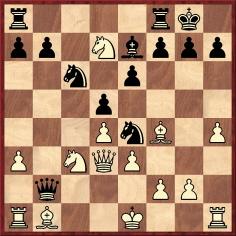
Edward Winter
Daniel Naroditsky (Foster City, CA, USA) notes a number of failings in the Chess School series of books published by the Russian Chess House. The present item quotes his comments on three positions from Chess School 3 The Manual of Chess Combinations by Alexander Mazja (Moscow, 2003):
1) Page 77 (position 371): Lipnitsky v Smyslov, Moscow, 1950 (variation):

‘The book’s solution is 1 Nxe4 dxe4 2 Ra2 Bb4+ 3 Kd1 Qxa2 4 Bxa2 exd3 5 axb4 Rfd8 6 Ne5 Nxb4 7 Bb1 and “White stands slightly better”.
First of all, 1 Nxe4, to which the book awards an exclamation mark, is by no means better than the simple 1 Nxf8, which leads to an advantageous position after 1…Qxf2+ 2 Kd1. In addition, 6 Ne5 and 7 Bb1 are both erroneous, squandering White’s sizable advantage. Instead, 6 Nc5, attacking b7 as well as d3, is much better, and the passive 7 Bb1 in the solution should be replaced by 7 Bc4, preventing 7…f6.’
2) Page 78 (position 373): Evdokimov v Ragozin, ‘SSSR, 1955’:
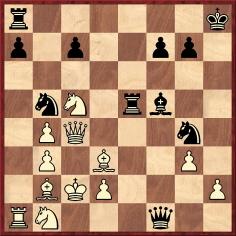
‘The solution (which was the play in the actual game) is given as: 1…Qe2 2 Qxb5 Ne3+ 3 Kc3 Rxc5+ 4 bxc5 Nd5+ 5 Kd4 Qg4+ 6 Kxd5 Bxd3 7 Qa4 Rd8+ and wins. However, a much quicker way to win is 6…Be6+ 7 Kc6 Qf3+ 8 Be4 Qxe4+ 9 Kxc7 Rc8+ 10 Kd6 Qd5+ 11 Ke7 Qd8 mate.’
3) Page 79 (position 384): Fairhurst v Kashdan, ‘Folkstown’ [Folkestone], 1933:
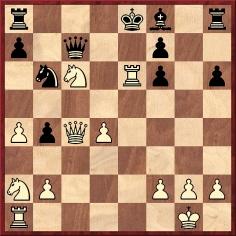
‘The solution is given in the book as:


The absence of signs for captures and for check exacerbates the problem. The solution is nonsense, with ‘...fe’ given twice. The move 1…fxe6 is wrong, as White wins after 2 Qxe6+ Be7 3 Re1 with a deadly attack.’
We add below the relevant part of Kashdan’s own annotations, on page 15 of the Book of the Folkestone 1933 International Chess Team Tournament (Leeds, 1933):
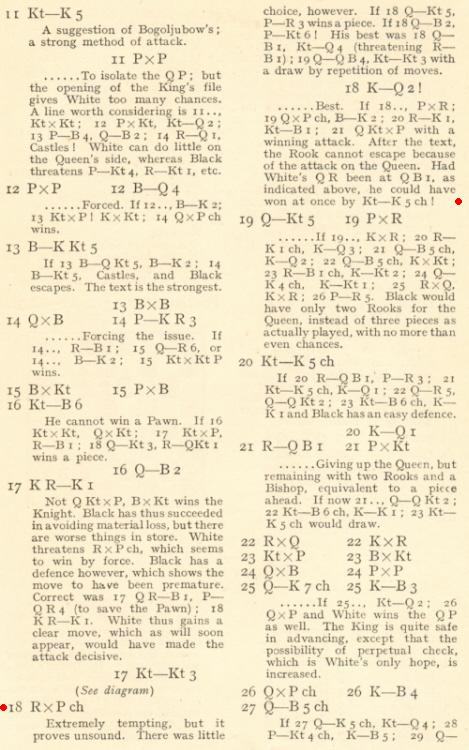
(7071)
Daniel Naroditsky offers some examples of errors in another tome in the series, Chess School 2 The Manual of Chess Combinations by Sergey Ivashchenko (Moscow, 2002):
1) Page 129 (position 709): ‘Agatov v Kurmashov, Kaliningrad, 1978’:
‘The solution is given as 1…a3 2 Nc1 Ba4 3 Kxd5 Bb3 4 cxb3 a2 5 Nxa2 cxb3 and “Black has a decisive advantage”.
First of all, 3 dxc4 instead of 3 Kxd5 gives White a clear advantage after 3…dxc4 4 Kxc4 followed by 5 Kb4. Secondly, 4 dxc4 too is strong and also gives White a clear advantage (i.e. 4…Bxc2 5 Kd4 and 6 Kc3). Finally, 4…a2 is obviously horrible. 4…cxd3 is the winning move, when White cannot stop Black’s pawns. After 6 Nc3 White has an elementary win.
The simple explanation is that the diagram is wrong; the white pawn should be on c3, not d3. The correct position is given in various endgame books, a recent example being page 412 of Endgame Tactics by G.C. van Perlo (Alkmaar, 2006), which states “Agapov-Kurmasov, Soviet Union, 1978”.’
2) Page 150 (position 831): Averbakh v Bondarevsky, ‘USSR, 1961’:
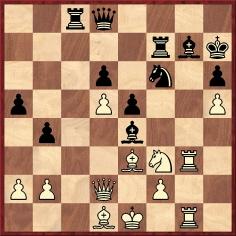
3) Page 151 (position 840): Foltys v Golombek, ‘Prague, 1947’:‘In the book the solution is given as 1 Bxh6 Bxh6 2 Qxh6+ Kxh6 3 Rg6+ Kxh5 4 Nxe5+, etc.
4 R1g5 mate is missed, and there is no mention of the line 3…Bxg6 4 Rxg6+ Kh5 5 Nxe5+ Ng4 6 Bxg4+ Kh4 7 Rh6+ Kg5 8 Nxf7+ Kxg4 9 Nxd8, as given on page 71 of Averbakh’s Selected Games (London, 1998):
In Ivashchenko’s book the game is misdated 1961 (it was played in the USSR Championship in Moscow in 1951), and it is not specified that the position did not occur in the actual game.’
‘The game was played not in Prague but in London (in a match between Great Britain and Czechoslovakia). According to the book, the solution is 1 Rxa6 Rxa6 2 Rb7 Rg7 3 c7 Ra8 4 Rb8 Rg8 5 Rxa8 Rxa8 6 Nd7+ Ke7 7 Nb8. But, of course, 7…Ra1+ followed by 8…Rc1 wins outright. The explanation is that a white pawn is missing in the diagram position. In the actual game Black resigned after the rook capture on a8.’
4) Page 183 (position 1025): ‘Crowl v Fehl, 1962’:
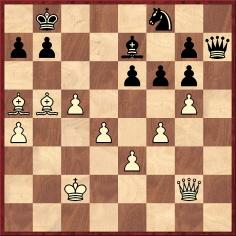
‘According to Ivashchenko, the solution is 1 Qxb7+ Kxb7 2 c6+ Ka8 3 c7 Kb7 4 Ba6+ Kxa6 5 c8(Q)+ Kxa5 6 Qc6 a6 7 Kb3 Nd7 8 Qc7+ Nb6 9 Qc3+.
However, after 6…Qh2+ 7 Kb3 Qe2, there is no mate in sight, and White has to settle for perpetual check. In the starting position, the simple 1 Ba6 bxa6 2 Qc6 leads to a quick mate.’
(7087)
From Chess Records, on the subject of the young chess authors:
John Donaldson (Berkeley, CA, USA) points out that a volume by Daniel Naroditsky is due to be published by New in Chess in 2010. Its title is Mastering Positional Chess: Practical Lessons of a Junior World Champion.
We are also grateful to Mr Donaldson for obtaining from Vladimir Naroditsky his son’s birth-date: 9 November 1995.
(6310)
The book was published in March 2010:
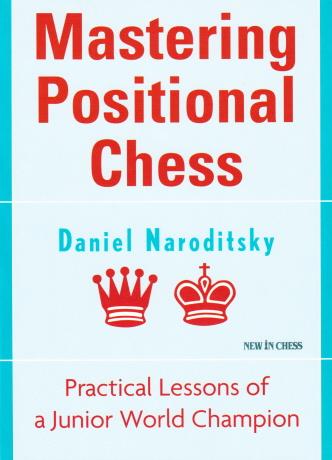
From an addition dated 29 September 2023 to Chess Broadcasts on the Internet:
A name today that will surely be on the list of almost everyone’s favourite chess broadcasters is Daniel Naroditsky, given his combination of acumen and eloquence.
To the Archives
for other feature articles.
Copyright Edward Winter. All rights reserved.